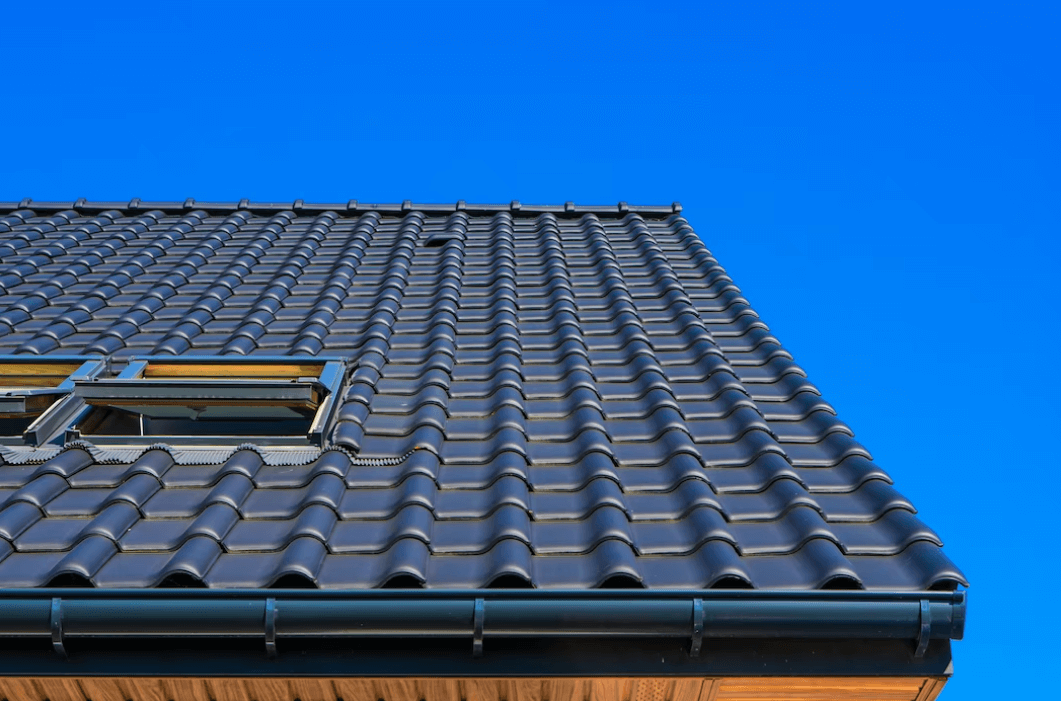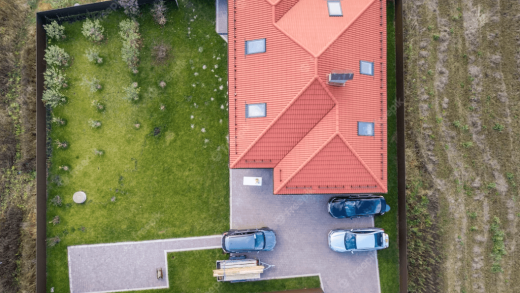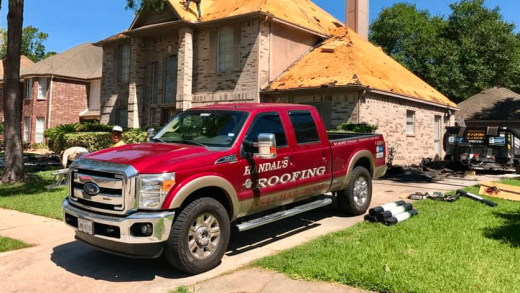The Unsurpassed Elegance of Slate Roofing

Slate roofing has been a symbol of elegance and sophistication for centuries. Its timeless beauty and durability have made it one of the most sought-after roofing materials in the world. But what makes slate so special? In this blog post, we’ll explore the aesthetic and functional appeal of slate roofing, its natural beauty and variety, unrivaled durability, environmental benefits, production journey from quarry to roof, different types and grades of slate tiles, installation process with post-installation inspections. We will also delve into maintaining your slate roof through regular inspection, cleaning techniques as well as addressing wear and damage on your beautiful roof. Lastly, we will compare Slate Roofing to other material options available today! Get ready to fall in love with the unsurpassed elegance of slate roofing!
The Aesthetic and Functional Appeal of Slate
Slate roofing has been used for centuries due to its exceptional aesthetic appeal and functional benefits. The natural beauty of slate tiles is hard to match, making them a top choice for homeowners looking to add elegance and sophistication to their homes.
Not only does slate look beautiful, but it also provides excellent insulation from heat and cold, making it an ideal material for roofing in any climate. Additionally, slate roofs are water-resistant, fire-resistant, and can withstand high winds without sustaining significant damage.
One of the most striking features of slate is its variety – with many different colors and textures available depending on where the stone was quarried. This means that each roof made from slate is unique in appearance.
Moreover, unlike other synthetic or man-made materials that might fade or discolor over time due to weathering or UV exposure; Slate maintains its color throughout years of use thanks to its naturally occurring mineral pigments.
The combination of functionality with timeless style makes a compelling case for why so many homeowners choose Slate Roofing over other roofing materials available today.
Natural Beauty and Variety
One of the most remarkable features of slate roofing is its natural beauty and variety. Slate tiles come in a vast range of colors, textures, and patterns that add to their aesthetic appeal. This makes it easy for homeowners to choose the perfect color combination that matches their house’s exterior design.
Slate’s unique texture and pattern make each tile different from the other. This gives your roof an authentic and personalized look that cannot be replicated by any other material. The variations in color are due to differences in mineral content during formation, which creates striking hues ranging from deep blacks to subtle blues, greens, purples, or grays.
Another fantastic feature of slate roofing is its ability to blend seamlessly with various architectural styles. Whether you have a modern or traditional home design concept, there is always a type of slate tile that will match your preference perfectly.
The natural beauty of slate roofing also enhances curb appeal significantly while increasing property value at the same time. Homeowners who invest in slate roofs not only enjoy unparalleled elegance but also benefit from long-lasting durability and energy efficiency for years ahead.
In summary, natural beauty and variety are two key reasons why many homeowners opt for slate roofing when building or renovating their homes’ roofs. With so many available options on offer today, anyone can achieve a stunningly beautiful roof with ease!
Unrivaled Durability
Slate roofing is renowned for its exceptional durability, making it a popular choice for homeowners looking to invest in a long-lasting roof. Unlike many other roofing materials, slate tiles can withstand extreme weather conditions such as heavy rain, snow and strong winds without showing signs of wear or damage.
One reason why slate roofs are so durable is due to the material’s natural resistance to water absorption. This means that even during prolonged rainfall or snowstorms, slate tiles will not become saturated with water and suffer from rotting or warping.
Another factor contributing to the unrivaled durability of slate roofing is its ability to resist fire and impact damage. Slate tiles do not catch fire easily and have been given a Class A rating by Underwriters Laboratories (UL), which indicates the highest level of protection against fires.
Because of how dense and hardwearing slate is, it does not require frequent repairs or replacements like other types of roofing materials might. If installed properly by experienced professionals following industry best practices, your slate roof should last for several decades without needing any major maintenance work done on it.
When you invest in a slate roof for your home or commercial property, you’re choosing one of the most durable roofing options available on the market today.
Environmental Benefits
Slate roofing offers numerous environmental benefits that make it an excellent choice for eco-conscious homeowners. For starters, slate is a natural material that does not contain any harmful chemicals or pollutants, making it safe and non-toxic to the environment. Unlike other roofing materials, which need to be replaced every few years and end up in landfills causing harm to the environment, slate roofs can last over a century.
Another benefit of using slate is its sustainability. Since this stone roofing material lasts for generations, there’s no need for frequent replacements; hence reducing waste generated from roof replacement projects. One more advantage of installing a slate roof is that it doesn’t require harsh cleaning chemicals nor high-pressure washing equipment since they are naturally weather-resistant.
Moreover, slate provides exceptional insulation qualities due to its dense structure which reduces heat transfer thus promoting energy efficiency while lowering heating and cooling costs within your home. Additionally, because of its durability and prolonged lifespan as well as being low maintenance lowers overall carbon footprint produced during production cycles compared with other types of roofing materials.
Selecting Slate Roofing has many environmental advantages such as longevity reduces landfill waste plus their innate insulating properties helping you save on future utilities consumption!
The Process of Creating Slate Roofing Tiles
The process of creating slate roofing tiles is a meticulous and time-consuming endeavor that requires skilled craftsmen. The journey begins in the quarry, where large blocks of slate are extracted from the earth. These massive blocks are then transported to a processing facility where they undergo several stages of production.
First, the blocks are cut into thick slabs using diamond-tipped saws or guillotines. Then, these slabs are split down into thinner sheets by hand using chisels and hammers. This traditional method allows for each tile to have its unique shape and character.
After splitting, the individual tiles are sorted by thickness and quality before being trimmed to their final size. This ensures that each tile meets specific standards for strength and durability.
Once processed, the tiles undergo thorough testing to ensure they can withstand harsh weather conditions without cracking or breaking over time. Only after passing these tests will they be ready for installation on your roof!
Creating high-quality slate roofing tiles takes precision and artistry at every stage of production – ensuring that you receive only the best materials for your home’s protection!
From Quarry to Roof: The Production Journey
The production of slate roofing tiles begins with extracting the raw material from a quarry. Slate is a natural stone that occurs in layers and can be found in various parts of the world, including North America, Europe, and Asia.
Once extracted, the slate blocks are transported to the processing plant where they undergo several stages of refinement. The first step involves splitting the blocks into thinner slabs using specialized machinery.
Next, skilled workers hand-finish each slab to create uniform thickness and smooth edges before cutting them into individual tiles. This process requires precision and expertise since every tile must fit perfectly on the roof.
After cutting, each tile is inspected for quality control purposes before being packaged for shipping. It’s important to ensure that there are no cracks or defects that could compromise its performance or aesthetics once installed on a roof.
Turning raw slate into beautiful roofing tiles requires careful attention to detail at every stage of production. From quarrying to packaging, it takes time and craftsmanship to produce high-quality slate roofing materials that can withstand harsh weather conditions while adding elegance and charm to any home or building.
Different Types and Grades of Slate Tiles
Slate roofing tiles come in different types and grades, each with its unique characteristics. The quality of the slate tiles depends on their source, thickness, color, texture, and durability. Here are some common types of slate roofing tiles:
- North American slate: Known for its strength and durability, it comes in a range of colors from blues to greens to grays.
- Welsh slate: Used for centuries due to its exceptional quality, it comes in a variety of colors such as heather blue and grey-green.
- Spanish slate: Relatively affordable but not as durable as other options, it has an attractive appearance with a range of colors like gray-blue hues to deep purples.
- Chinese slate: Budget-friendly but may not last long due to weathering properties.
The grade system helps ensure that you choose the right type of tile for your roof’s location based on factors such as wind resistance and water absorption rates. Grade S1 offers the best performance while Grade T3 is reserved for decorative purposes only.
It’s important to remember that no matter which option you choose, proper installation by professionals will help maximize longevity and aesthetic appeal over time.
Installing Slate Roofs
Installing slate roofs is a complex and labor-intensive process that requires the expertise of experienced roofing professionals. The first step in installing a slate roof is to prepare the base, which includes ensuring that the structure can support the weight of the tiles.
Once the base is ready, slates are laid bottom-up starting from the eaves up to the ridge. It’s essential to ensure that each tile overlaps with its adjacent one by at least three inches. This helps prevent water infiltration and ensures proper drainage.
Roofers use various techniques such as hooking or nailing to attach slates onto battens securely. The type of fastening used depends on factors such as roof pitch and climate conditions.
After completing installation, post-inspection should be done by checking for any loose or damaged tiles and fixing them immediately. A well-installed slate roof can last over 100 years when maintained properly.
While installing a slate roof may take longer than other materials like asphalt shingles, it’s worth it due to its durability and elegance appeal.
Preparing the Base
Before installing slate roofing tiles, it is essential to prepare the base properly. The base must be strong and stable enough to support the weight of the slate tiles. If not, the roof may fail prematurely.
The first step in preparing the base is to ensure that it is clean and free from any debris. Any dirt or dust can interfere with adhesion between the underlayment and sub-roofing material.
After cleaning, a layer of waterproof underlayment should be installed over the surface of your roof deck. This will prevent moisture from seeping through into your home while also providing additional protection against harsh weather conditions.
Next, install ice and water shield on eaves edge & valleys as this helps provide an extra layer of protection against extreme weather conditions like snow and hailstorms.
Add a metal drip edge around all edges of your roof deck to protect against wind-driven rain or other precipitation that might otherwise penetrate underneath shingles or tiles.
By preparing a solid foundation for your slate roofing installation project, you can have peace-of-mind knowing that you are investing wisely in one of nature’s most beautiful assets without compromising structural integrity!
Laying the Slate Tiles
Laying the slate tiles is one of the most critical steps in installing a new slate roof. It requires precision and attention to detail, as each tile must be placed in its specific location to ensure a secure and long-lasting installation.
Before laying the tiles, it’s essential to prepare the base by ensuring that it’s clean and free from any debris or dust. This step helps prevent any damage to the underside of the slate tiles, allowing them to lay flat on top of each other.
Once you’ve prepared your base correctly, you can begin laying out your first row of slates along with a chalk line snapped across every fourth course horizontally. The next step involves cutting some slates into smaller pieces and filling in areas where full-size tiles won’t fit.
As you continue working upwards toward the ridge, make sure that all overlaps are correct because overlapping is crucial for preventing water penetration underneath your roofing material. Also, keep an eye out for any damaged or cracked slates that need replacing before continuing.
After all rows have been laid down and inspected thoroughly for quality assurance purposes – enjoy knowing how beautiful and durable your new slate roof will be!
Post-Installation Inspections
After the installation of slate roofing, it is important to conduct post-installation inspections to ensure that everything is in place. These inspections are critical because they can identify any issues early on before they become major problems.
One of the things to look out for during these inspections is any damage that may have occurred during installation or due to external factors like weather conditions. Any cracks or chips should be addressed immediately as they can lead to leaks and other issues.
It’s also essential to check if all the tiles were installed correctly and securely. Loose tiles can cause significant damage over time, so it’s crucial that every tile is properly attached.
Another aspect of post-installation inspection is checking for proper drainage. The slope must be adequate enough for water runoff, preventing moisture from accumulating on the roof surface.
An inspection should include a thorough examination of flashings around chimneys, vents, and skylights as well as gutters and downspouts connected with your roof system. Checking these areas ensures proper function, which prevents water leakage into your home.
Post-Installation Inspections play a vital role in ensuring your slate roofing system functions optimally throughout its lifespan by detecting minor defects long before becoming significant ones.
Maintaining Your Slate Roof
Maintaining your slate roof is crucial to ensure its longevity and beauty. Regular inspections are necessary to identify any damages or wear on the tiles. It’s essential to clean the roof periodically, removing debris, leaves, and other materials that can accumulate over time.
To maintain your slate roof properly, use only gentle cleaning techniques such as low-pressure washing with water and mild detergent. Avoid using harsh chemicals or pressure washers that can damage the tiles’ surface.
It’s also important to address any signs of wear or damage immediately. Missing or cracked tiles should be replaced promptly by a professional roofer who has experience working with slate roofing.
Another tip for maintaining your slate roofing is to trim nearby trees regularly to prevent falling branches from damaging the tiles. You should also check gutters and downspouts regularly for blockages that could cause water backup and potential leaks in your roof.
By following these simple tips for maintaining your slate roof, you’ll be able to enjoy its natural beauty and durability for decades without significant problems arising.
Regular Inspection
Regular inspection is crucial in ensuring the longevity and performance of your slate roofing. It allows homeowners to identify any potential problems early on, preventing them from becoming larger issues that can be costly to repair.
During a regular inspection, it’s important to check for any cracks or missing tiles. These can lead to water leakage and damage the underlying structure of your roof. Look out for any signs of wear or damage, such as chipped corners or broken edges.
It’s also essential to examine the flashing around chimneys and vents. Flashing helps direct water away from vulnerable areas but can deteriorate over time due to exposure to weather elements.
Gutters should also be checked during inspections as clogged gutters prevent proper drainage, leading to water pooling, which may cause leaks into your home.
Scheduling regular inspections with professional contractors will ensure that minor issues are addressed before they become major problems causing significant damages that could have been avoided.
Cleaning and Maintenance Techniques
Cleaning and maintaining your slate roof is essential to ensure its longevity and aesthetic appeal. One of the best ways to maintain a slate roof is through regular cleaning, which can help prevent the buildup of debris that can cause damage over time.
To start, remove any leaves, twigs, or other debris from gutters and valleys regularly. Then, use a soft-bristled brush or broom to sweep away loose dirt and debris from the surface of the tiles. Be careful not to scrub too hard as this could loosen individual tiles. Instead, gently sweep in one direction along each tile.
For more intense cleaning needs such as moss removal or stubborn stains, use a mild detergent solution with warm water mixed in equal parts. Apply this solution to affected areas using a soft-bristled brush before rinsing it off with clean water.
When working on your roof’s maintenance tasks, always make sure you are safe while doing so by wearing appropriate clothing for weather conditions and personal protective equipment like gloves when necessary.
Regularly inspecting your slate roof for signs of wear or damage should also be part of your maintenance routine. Catch small issues early before they become expensive problems later on down the line!
Addressing Wear and Damage
Slate roofing is known for its durability, but like any other material, it can suffer from wear and damage over time. If you notice missing or cracked tiles on your slate roof, it’s important to address the issue promptly to prevent further damage to your home.
One common cause of wear on a slate roof is foot traffic. Walking on a slate roof can cause cracks or breaks in the tiles. To avoid this problem, make sure that anyone accessing your roof does so using proper safety equipment and techniques.
Another issue that can lead to damage is extreme weather conditions such as hailstorms or heavy snowfall. While slate roofs are built to withstand severe weather events better than many other materials, they may still sustain some damage during these events.
If you do notice signs of wear or damage on your slate roof, it’s best to call in a professional roofer who specializes in working with natural stone materials. They will have the knowledge and expertise needed to replace damaged tiles without causing further harm to the surrounding area.
By taking care of any issues with your slate roofing promptly and professionally, you’ll ensure that it continues to provide protection and beauty for years to come.
Comparing Slate Roofing to Other Materials
Slate roofing is undoubtedly a premium roofing material that boasts elegance, durability, and environmental benefits. But how does it compare to other materials? Let’s take a closer look.
First up, asphalt shingles are the most commonly used roofing material due to their affordability. However, they pale in comparison to slate roofs when it comes to longevity and aesthetic appeal. Asphalt shingles only last about 20 years compared to slate’s lifespan of over a century!
Metal roofs have become increasingly popular in recent years for their durability and energy-saving properties. While metal roofs can last up to 50 years or more, they still fall short of slate’s life expectancy. Additionally, the industrial look of metal isn’t as visually appealing as the natural beauty offered by slate.
Wooden shakes offer rustic charm but need regular maintenance and replacement due to rotting or pest infestations. Clay tiles provide an exotic Mediterranean vibe but are prone to cracking during harsh weather conditions.
While there are many different types of roofing materials available on the market today with their advantages and disadvantages, none quite match the natural elegance and unparalleled durability provided by beautiful slate roofing!
Conclusion
Slate roofing is an elegant and durable choice for homeowners who want to invest in a long-lasting and beautiful roof.
With its natural beauty, variety of colors, and environmental benefits, it’s easy to see why so many people opt for this type of roofing material.
The production journey from quarry to roof ensures that each tile is carefully crafted with attention to detail. The installation process requires skill but ultimately results in a stunning finished product. And although maintenance may be necessary over time, the durability of slate means that the investment more than pays off.
When comparing slate roofing to other materials on the market, it becomes clear that there really is no contest when it comes to elegance and durability. While other options may be cheaper upfront or easier to install, they simply cannot match the look or longevity of slate tiles.
So if you’re looking for a timeless and sophisticated option for your home’s roof, consider investing in slate roofing tiles – you won’t regret it!



